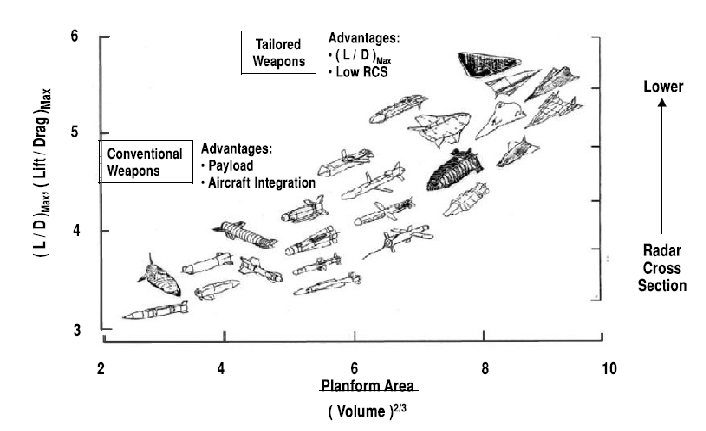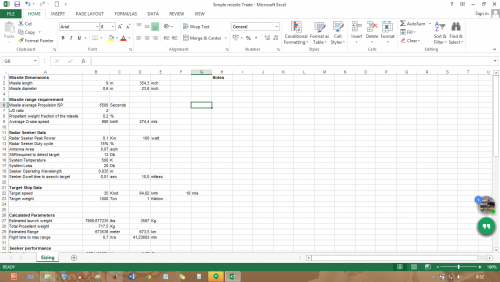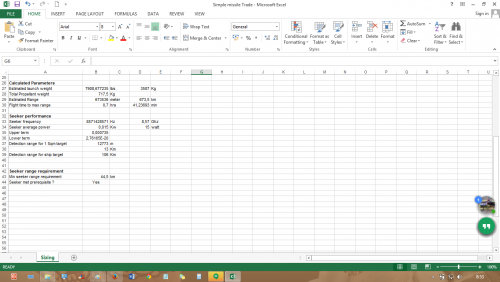CxxTxx said:
Do ASM missiles incorporate a conical (steel) penetrator that precede the explosive part of the missile into a ship? (Or does the kinetic energy of an aluminum missile body allow it to penetrate deeply into the target?) And, to maximize the destructive potential of the blast, is it better to plunge a missile into a ship from a steep overhead angle or sea skim one into the side?
Thanks!
Given the low thickness of today's warship hull. The missile can penetrate inside it before exploding. No need of "armor piercing cap"
------------------------
My view on the design though it must start with reviewing size constraints.. how big the missile should be. Then range and other requirements.
Anyway for sake of fun.. Some time ago i made myself an excel spreadsheet for "my own radar guided anti ship missile" Based on E.Fleeman's book and some other papers.
It will determine range, radar seeker range and based on target properties determine if the seeker meet the minimum range requirement.
Download
http://www.mediafire.com/view/rgyd867otaqkr2a/Simple_missile_Trade.xlsx
Hmm and some filling guide :
This will help filling the L/D coloumn
As for ISP coloumn, ISP for turbojet or turbofan engine is high with over 5500 sec. Liquid and Solid propelled ramjet comes the 2nd with some 1000-2000 sec. Rocket is around 250 (Solid) or 300-400 (Liquid) Those assume hydrocarbon based propellant.
There's however a limitation, the sheet does not calculate mass for additional booster propellant. This is important for supersonic ramjet missile which use it to gain "start-up" speed for their ramjet. The propellant mass calculated is the "cruise" propellant which used for the missile to cruise. User will have to calculate or guess it, the launch weight calculated in the sheet however is the "all up weight including the booster"



